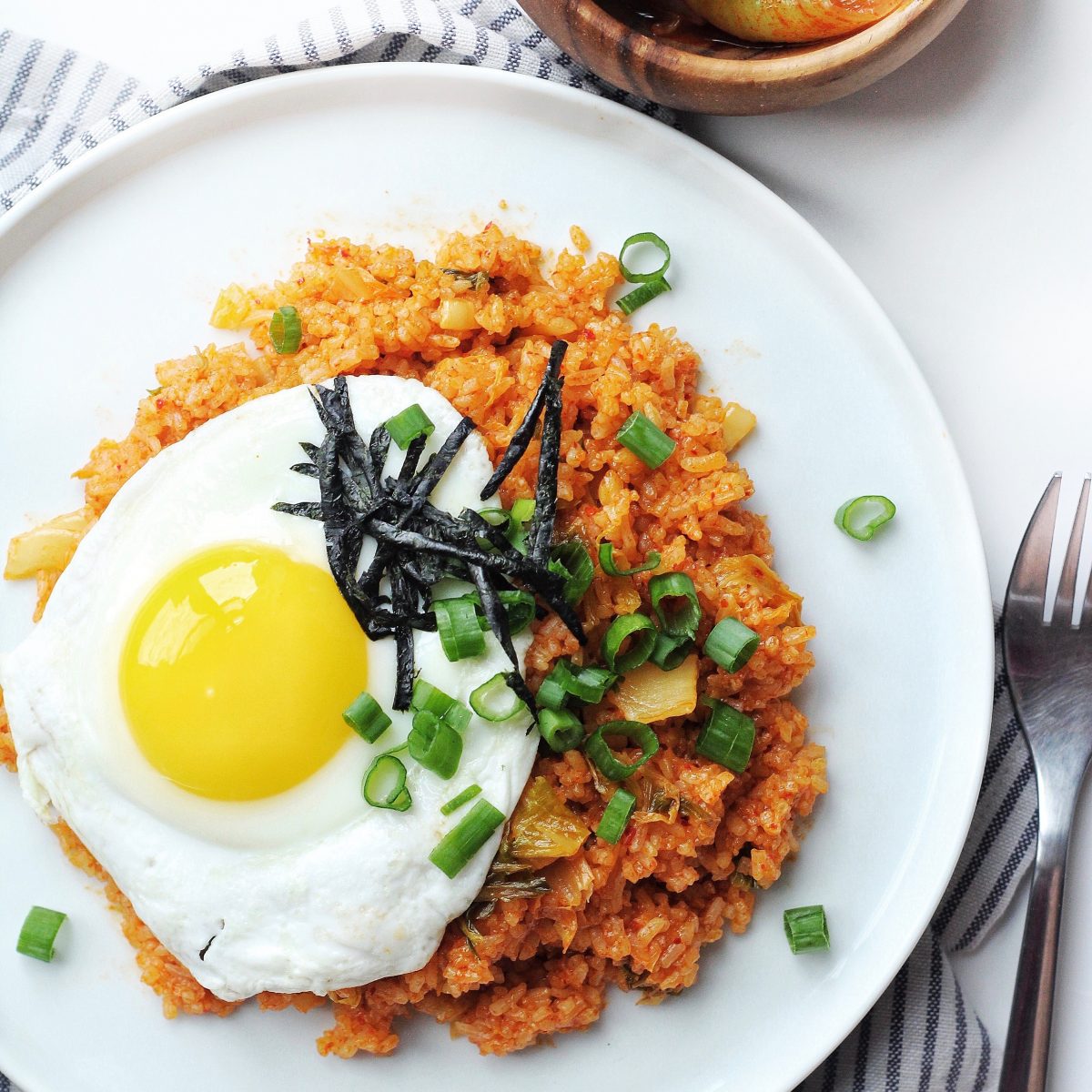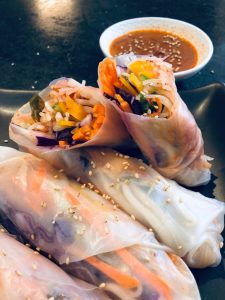
Soju en kimchi: de perfecte match
Soju en Kimchi zijn twee iconische Koreaanse producten die al eeuwenlang samen worden genoten. De

Iedereen heeft standaard rijst en kimchi in thuis toch?! Dan is dit gerecht super makkelijk en snel om te maken als je geen zin hebt om uitgebreid te koken en naar de supermarkt te gaan!
Kimchi bokkeumbap (김치볶음밥) literally means kimchi fried rice. This is a humble Korean dish and the method of making and concept is really the equivalent to the Italian ‘cucina povera’ (cooking of the poor) (in Dutch: armeluiskeuken), which is really all about cooking the most tasty, yet quality dishes with the ingredients you have at home. In Korean households, there is always rice and kimchi. Hopefully that is the case with your house as well because if you’re stuck, kimchi is there to save the day!
The basic contents of kimchi bokkeumbap are literally rice and kimchi, but you can add proteins to it if you like. Some popular examples are processed meats like canned tuna, sausage, ham and spam. You can of course use unprocessed meat like chicken, pork, beef or even seafood like shrimp and calamari. It is also possible to go fully vegan and substitute the meat for tofu.
Kimchi bokkeumbap is also very popular among students with a low budget or those with very little cooking experience but still want to have something that tastes great and fills them up. Again, very similar to Italian cuisine. Every Italian has pasta and tomato sauce in their pantry right? And now practically everyone on earth probably has pasta and tomato sauce in their pantry because if in doubt, make pasta (with variations depending on what other ingredients you have at home) am I right? But make it Korean: if in doubt, make kimchi bokkeumbap. The literal Korean translation of cucina povera would be ‘가난한 부엌’ (ganan-han bu-eok). Once you’ve learned the basic techniques of kimchi fried rice, you can experiment with whatever other ingredients you like. Hopefully soon, Korean kimchi gets the same reputation and respect that Italian pasta has.
Koreans use short-grain rice but any kind of rice should be ok to use as well. Only if you really want the Korean experience, go for the short-grain rice. The most important thing about making fried rice is using day-old rice. If the rice was in the fridge, it could get quite hard so it is recommended to put it in the microwave to break the rice a bit. If you don’t have a microwave, you can break the rice over the stove on low heat.
If you choose to use fresh rice, you can of course do that. Just make sure to add less water than you normally do just so that the grains cook are a bit drier and cooled before using.

Ingredients:
Notes:
*Make sure to use well-fermented kimchi for this. There are no exceptions or substitutes to this. Well-fermented kimchi provides a rich and robust aroma to the fried rice so this is a necessary ingredient. You will need kimchi that has been fermenting for at least 3 – 4 weeks.
**Use day-old cooked rice. This is because the rice needs to be dry in order to get a nice and clean fried rice. If your rice was in the fridge, make sure to heat up the rice by breaking them apart either in the microwave or on the stove just until it has slightly warmed up and the pieces or rice can break apart.

Soju en Kimchi zijn twee iconische Koreaanse producten die al eeuwenlang samen worden genoten. De

Korean Seasoned Fried Chicken (KsFC) Als je Koreaanse gekruide gebakken kip (KFC) nog niet hebt

Kimchi springrolls met Gochujang pindakaas Dipsaus De lente hangt in de lucht, je kunt het

Vegan Kimchi Mandu (Steamed) ft. Chilli Chan’s Dumpling Sauce Vakanties in Korea betekende altijd veel